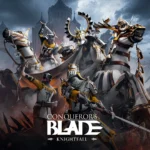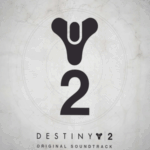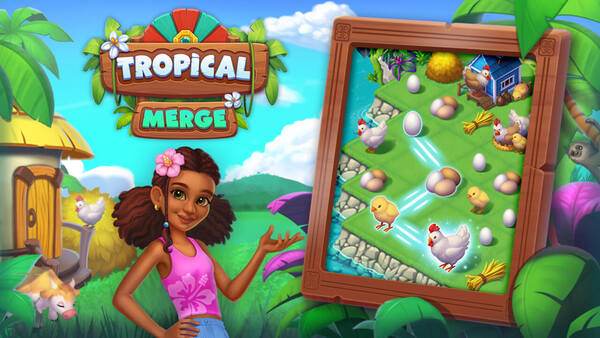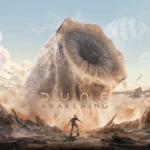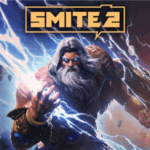Black Myth: Wukong is one of the most highly anticipated action RPGs in recent memory. Developed by Game Science, an indie studio based in China, the game has captured global attention with its stunning visuals, mysterious world design, and dynamic combat system. Drawing inspiration from Journey to the West, one of the most revered Chinese literary classics, Black Myth promises a dark reimagining of the legendary Monkey King's journey.
First revealed through a jaw-dropping gameplay trailer in 2020, the game stunned audiences with its cinematic presentation, fluid animations, and mythological flair. Since then, anticipation has grown steadily, with each new showcase revealing deeper layers of its world and combat systems. Scheduled for release in August 2024, Black Myth: Wukong is poised to be a breakout title not just for China’s game industry, but for global action RPG fans.
This article dives into every aspect of the game: development history, story inspiration, gameplay mechanics, visual fidelity, and where it fits in the next generation of action titles. We’ll also analyze its pros and cons and offer a final rating based on early impressions.
1. The Origins of Black Myth: Wukong
Black Myth: Wukong is the debut flagship title from Game Science Studio, a relatively small team founded by former Tencent developers. Rather than follow industry trends, the developers took a bold path by adapting Journey to the West into a high-budget, Souls-like action game.
Their approach was unique: release a full 13-minute gameplay trailer before building major hype. That strategy worked. The trailer went viral internationally, sparking comparisons with top-tier studios like FromSoftware and Santa Monica Studio.
The developers made it clear from the start — Black Myth wasn’t just another indie experiment. It was a statement that Chinese developers could compete with the best in the world.
2. A New Interpretation of Journey to the West
While Black Myth is based on Journey to the West, it doesn’t follow the tale literally. Instead, it draws heavily from its themes, symbols, and characters to craft a darker, more mature narrative.
You play as the Destined One, a mysterious warrior with powers reminiscent of the Monkey King. You’ll face demonic foes, heavenly deities, and legendary creatures drawn from Chinese folklore, all reimagined through a haunting lens of dark fantasy.
The game blends traditional Taoist, Buddhist, and folk mythologies into a narrative that explores fate, betrayal, and the cost of power — elevating it beyond a simple hero’s journey.
3. Combat System and Mechanics
The combat in Black Myth: Wukong is heavily inspired by Soulsborne mechanics. Battles are deliberate, punishing, and demand mastery of dodging, parrying, and enemy pattern recognition.
Players wield a magical staff that extends, contracts, and shapeshifts mid-battle. The staff alone allows for a wide range of combos and counters. On top of that, the protagonist can transform into different creatures like insects or a giant wolf, offering tactical advantages in combat or traversal.
Magic and elemental attacks, such as ice spells or thunder strikes, can be unlocked and upgraded, creating layered build options. Boss battles appear cinematic and brutal, often lasting multiple phases and requiring precise strategy.
4. Visuals and Technical Presentation
One of Black Myth’s standout features is its graphics. Built using Unreal Engine 5, the game showcases breathtaking environments, lifelike textures, and smooth transitions between gameplay and cutscenes.
From misty bamboo forests and haunted temples to crumbling mountain fortresses, every environment drips with atmosphere. Lighting plays a major role in mood-setting, with dynamic weather systems and particle effects enhancing the immersion.
Enemy designs are equally striking. You’ll face corrupted monks, spirit beasts, and grotesque hybrids that blend myth with horror, all animated with meticulous detail.
5. Exploration and World Design
While not fully open world, Black Myth adopts a semi-open structure similar to games like Sekiro or God of War. Each region is handcrafted and interconnected, with verticality, hidden paths, and lore-driven exploration.
There are incentives to go off the beaten path: you may find new abilities, rare enemies, or fragments of forgotten legends. Shrines, NPCs, and cursed items dot the landscape, rewarding the curious player.
Traversal includes traditional running and jumping, but also transformations like insect form to access tight spaces, or cloud-riding to cross gaps — deepening both puzzle and level design.
6. Enemies and Boss Encounters
Enemy variety appears to be one of Black Myth’s strengths. You’ll battle everything from aggressive warriors to spectral demons and elemental beasts. Many enemies exhibit unique behaviors and require distinct strategies to defeat.
Boss fights are a cornerstone of the experience. These are multi-stage encounters filled with scripted animations, voice acting, and powerful lore significance. Some bosses taunt you, change forms, or alter the environment mid-fight.
Early previews have shown battles against a giant white wolf demon, a golden-armored war god, and a flaming phoenix-like creature — each emphasizing spectacle, precision, and chaos.
7. RPG Elements and Character Progression
Though an action-first experience, Black Myth includes deep RPG mechanics. You can upgrade your health, stamina, and magical power, while also unlocking new moves, spells, and transformations.
The weapon system revolves around your magical staff, but transformation abilities add variety. You can take on the form of enemies you’ve defeated, gaining access to their powers temporarily in combat.
Items, talismans, and relics can be equipped to alter your stats, add resistances, or grant bonuses in battle. The build flexibility appears aimed at rewarding experimentation without overwhelming the player.
8. Storytelling and Voice Acting
Black Myth takes storytelling seriously. Instead of lengthy cutscenes, it uses environmental storytelling, cryptic dialogue, and cinematic boss intros to immerse the player.
NPCs speak in ancient dialects or poetic riddles. Much of the game’s narrative seems inspired by Buddhist parables and Taoist allegories, with heavy symbolism embedded in world events and character designs.
The game will feature full voice acting in both Mandarin and English, with accurate lip-syncing. Subtitles in multiple languages will also be available, ensuring the story reaches a global audience.




